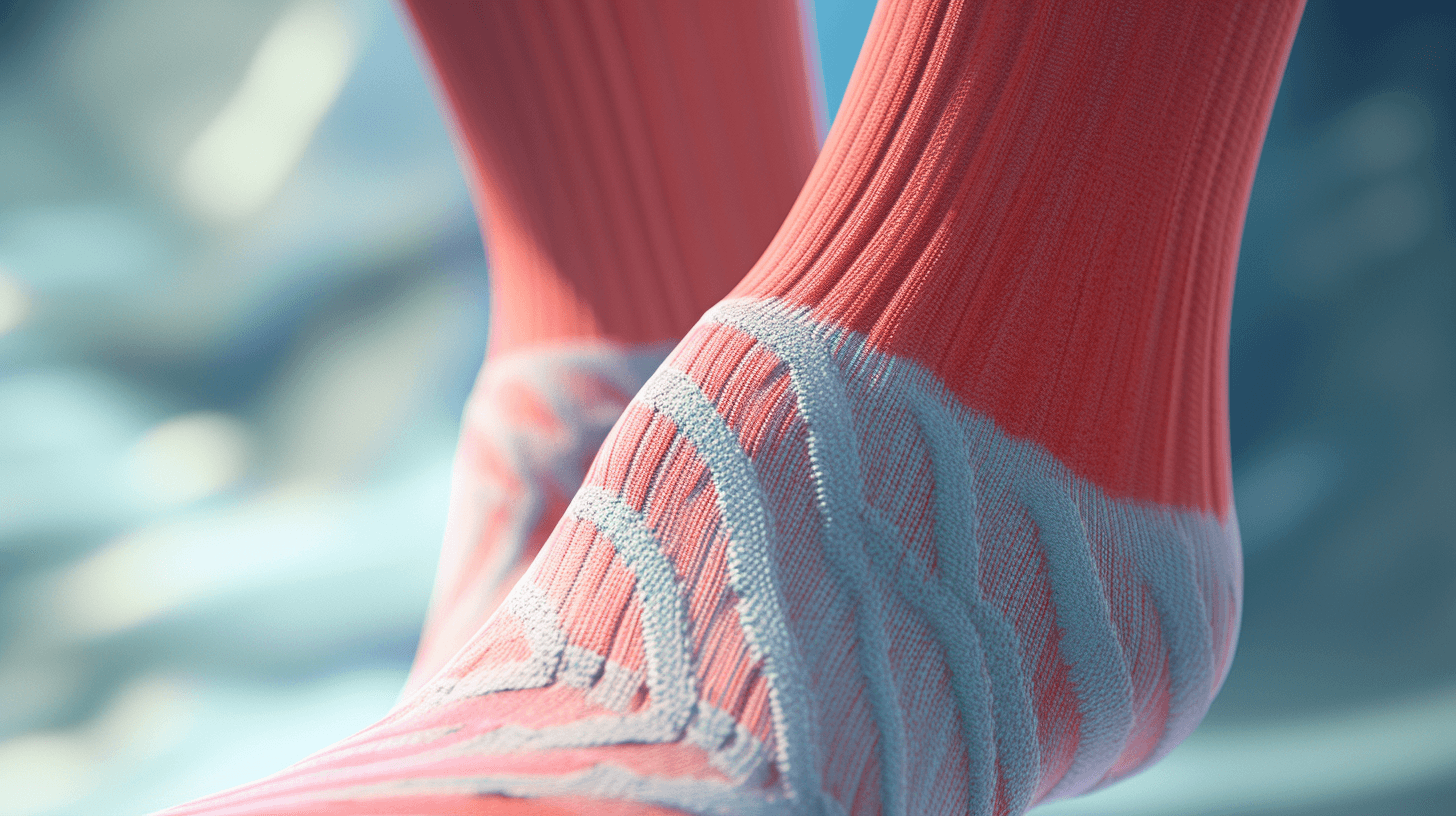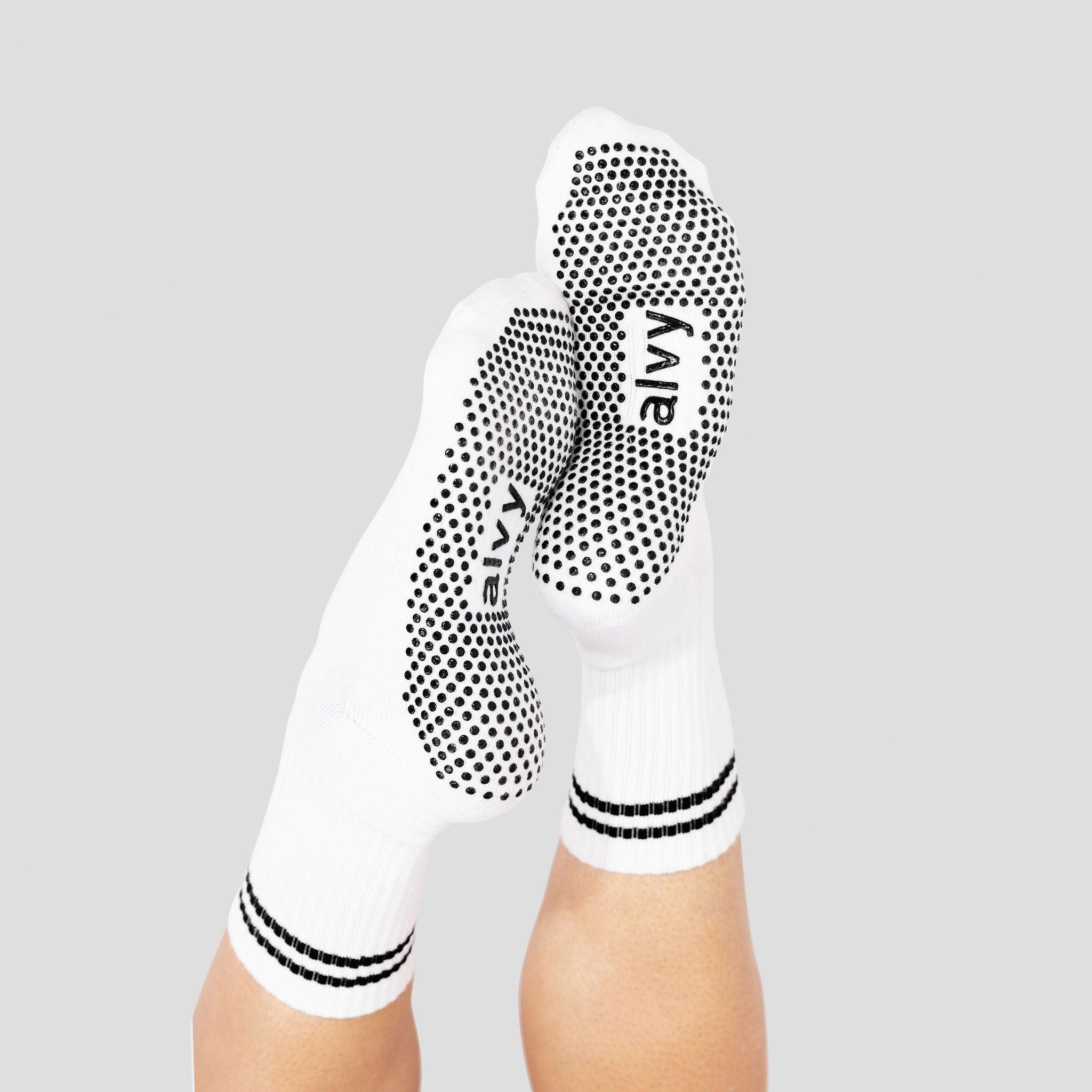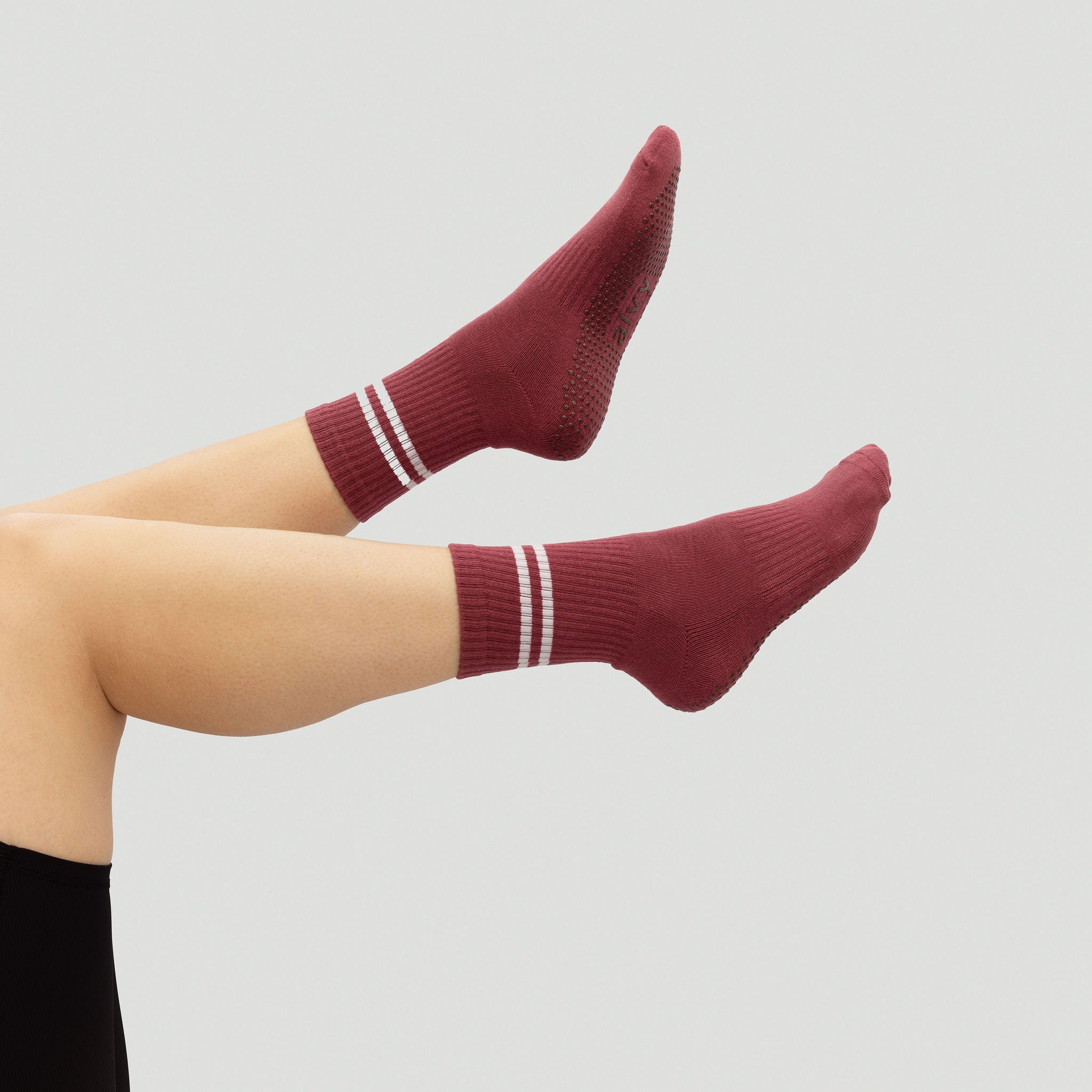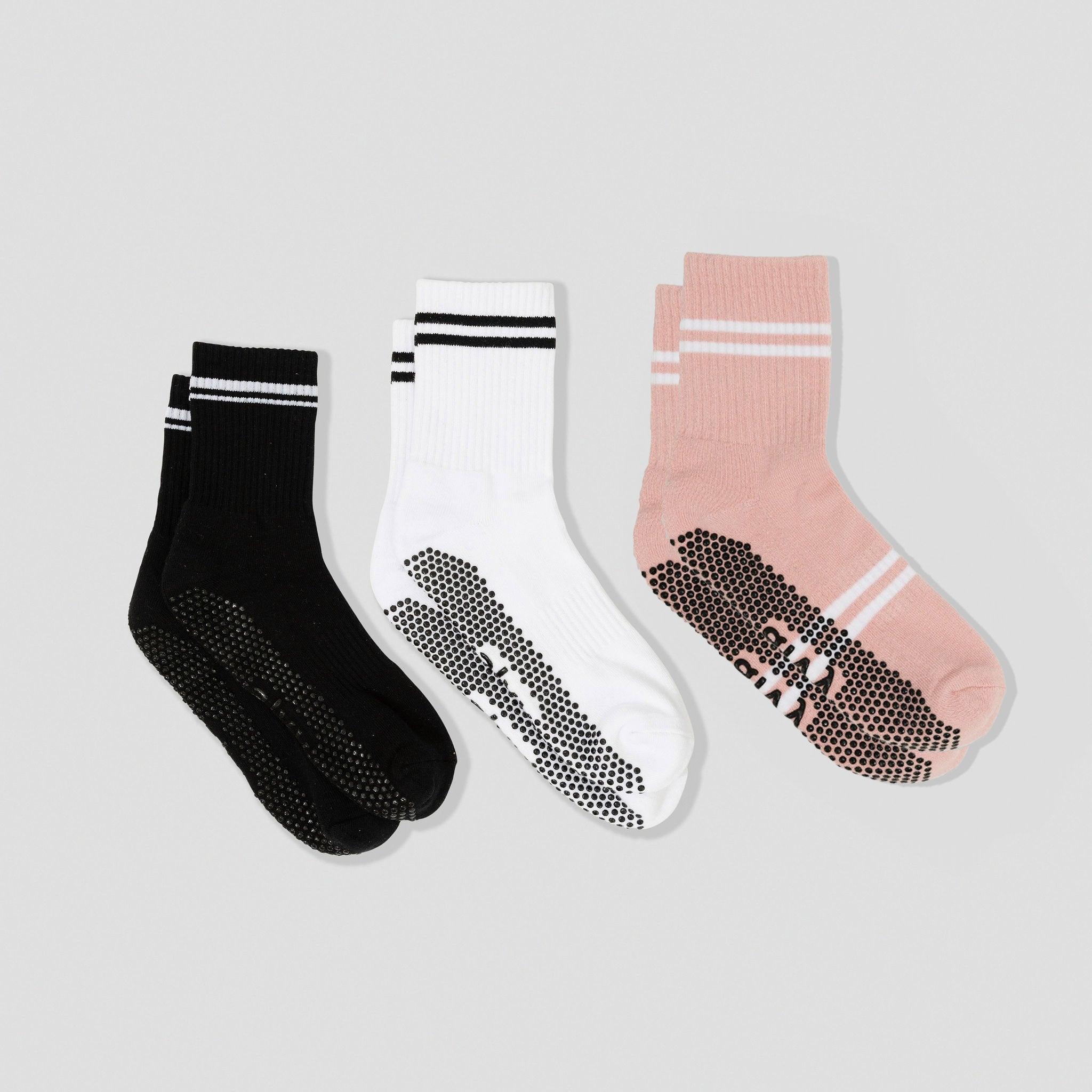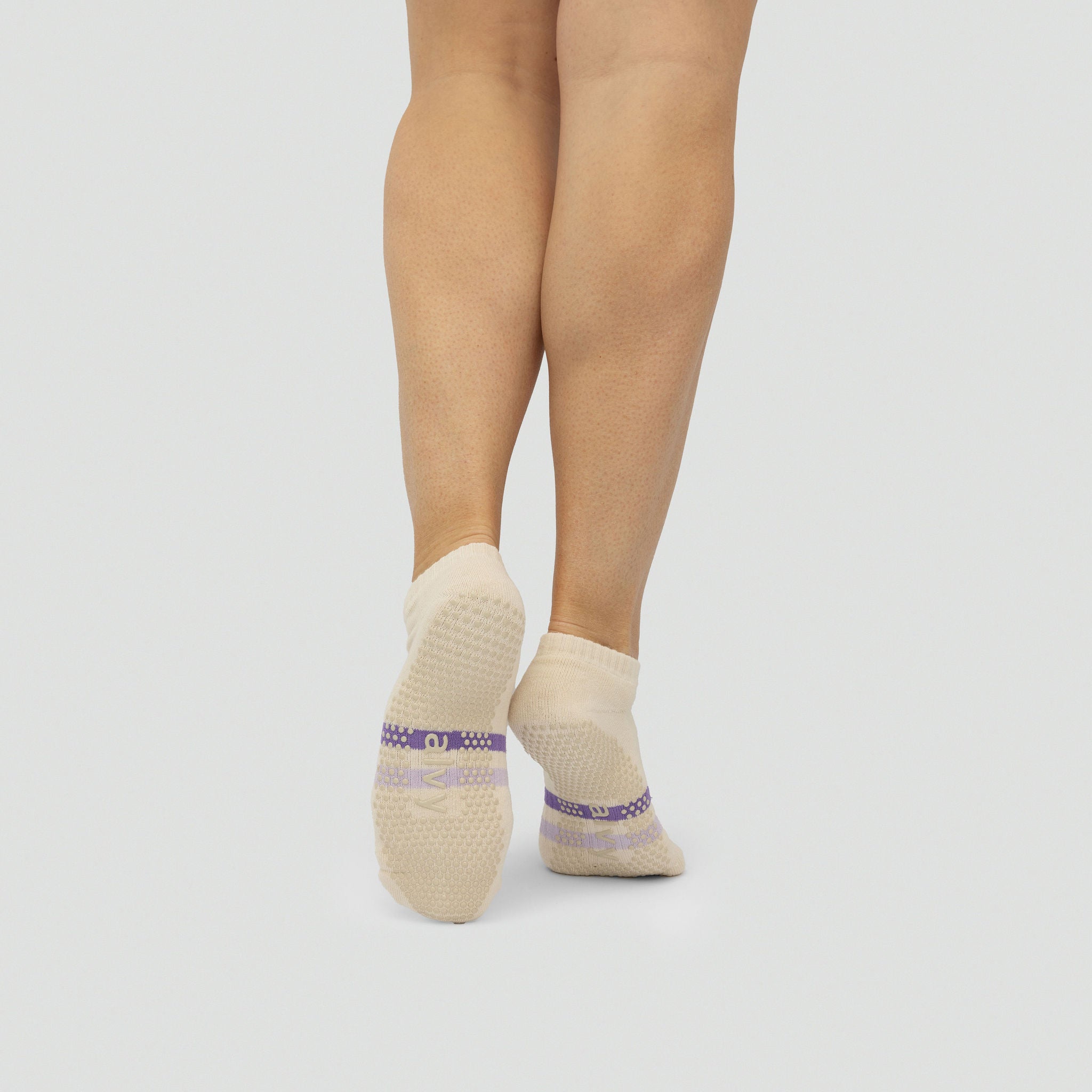Fitness enthusiasts and athletes will buy grip socks due to their ability to provide better traction. However, it is important to know how long grip socks last to ensure that they provide the necessary support and grip during activities.
This article will examine the elements that determine how long grip socks survive, the parts of a grip sock that are most vulnerable to damage (wear and tear), and maintenance tips to extend their longevity.
Estimated Lifespan of Grip Socks
The lifespan of grip socks can vary between 3 and 12 months depending on the type of sock and how often they are used. Here are some estimated lifespans for different types of popular grip socks:
- Low-rise grip socks: 6-12 months
- Crew grip socks: 9-12 months
- Toe-less grip socks: 3-6 months
However, it is important to note that these are just estimates and the lifespan of grip socks can vary depending on several factors such as the materials used in production, frequency of use, type of activity, and areas prone to wear and tear. Investing in more expensive grip sock brands made from premium materials could extend these estimates.
Factors That Affect Grip Sock Lifespan
The lifespan of grip socks can vary depending on several factors. Here are some of the factors that can affect the lifespan of grip socks:
- Quality of materials. Grip socks' longevity may be impacted by the quality of the sock materials used in their manufacture. Superior materials such as more than 80% cotton might have a longer lifespan than inferior ones made with a high component of synthetic materials. Pilates socks from Kmart, Amazon, Temu and the like have cheaper quality fabrics which are thinner and will wear out faster.
- How often they're used. Grip socks will wear out more quickly the more often they are used.
- Type of exercises. Grip socks, for instance, could wear out more quickly when used for high-intensity exercises like running or leaping than when used for low-intensity exercises like yoga. Moreover, Pilates which can involve a lot of twisting and turning may cause more wear and tear on the grip pads of the socks..
- Areas prone to wear and tear. The grip pads on the sole of the sock, the elastic band around the ankle, and the fabric around the toes and heel are the areas of a grip sock that are prone to wear and tear.
Areas of Grip Socks That Wear and Tear The Most
Grip socks are not immune to wear and tear. The areas of a grip sock that are prone to wear and tear include the grip pads on the sole of the sock, the elastic band around the ankle, and the fabric around the toes and heel. To prolong the lifespan of grip socks, it is important to take proper care of them. This includes washing the grip socks after each use, air drying them instead of using a dryer, storing them in a cool, dry place, and checking the grip regularly.
Signs that a grip sock needs to be replaced due to wear and tear include worn-out grip pads, stretched-out elastic bands, and thinning or holes in the fabric around the toes and heel.
How To Make Grip Socks Last Longer
It's critical to properly care your grip socks in order to extend their lifespan. This include cleaning them after every use, letting them air dry rather than using a dryer, keeping them in a cool, dry location, and often checking the grip.
Worn-out grip pads, stretched-out elastic bands, and thinning or holes in the fabric surrounding the toes and heel are indications that a grip sock needs to be replaced due to wear and tear. You can make sure that your grip socks last longer and offer the support and grip you need when engaging in certain activities by being aware of these variables and caring for them properly.
In short, this is how to make your non-slip grip socks last longer:
- Wash them after each use
- Air dry them instead of using a dryer
- Store them in a cool, dry place
- Rotate them with other pairs of grip socks
- Check the grip regularly
Signs You Grip Sock Needs To Be Replaced
Grip socks are not immune to wear and tear, and signs that a grip sock needs to be replaced include worn-out grip pads on the sole of the sock, stretched-out elastic band around the ankle, and thinning or holes in the fabric around the toes and heel. Proper care and maintenance can help prolong the lifespan of grip socks, including washing them after each use, air drying them instead of using a dryer, storing them in a cool, dry place, and checking the grip regularly.
Wrapping Up
To summarize, grip socks can last from 3 to 12 months depending on the type of sock. Crew grip socks can last from 6 to 12 months, calf-length grip socks can last from 9 to 12 months, and toe-less grip socks can last from 3 to 6 months if you choose the right grip socks. Signs that a grip sock needs to be replaced due to wear and tear include worn-out grip pads on the sole of the sock, stretched-out elastic band around the ankle, and thinning or holes in the fabric around the toes and heel.



